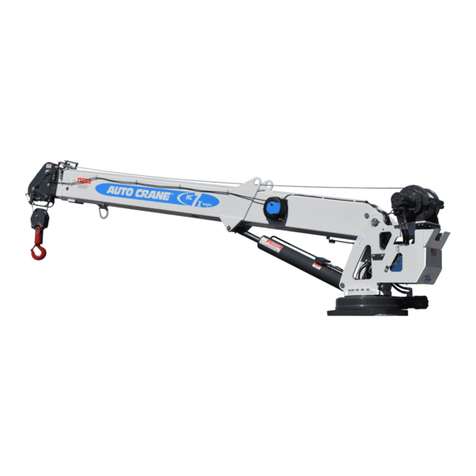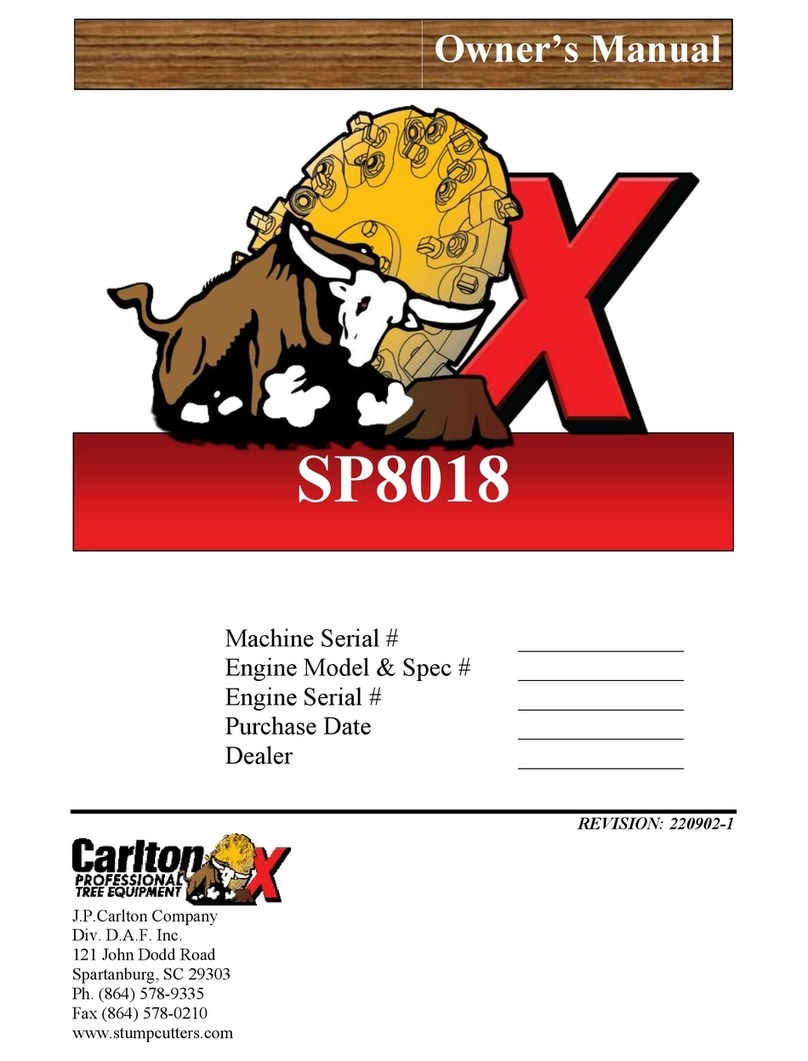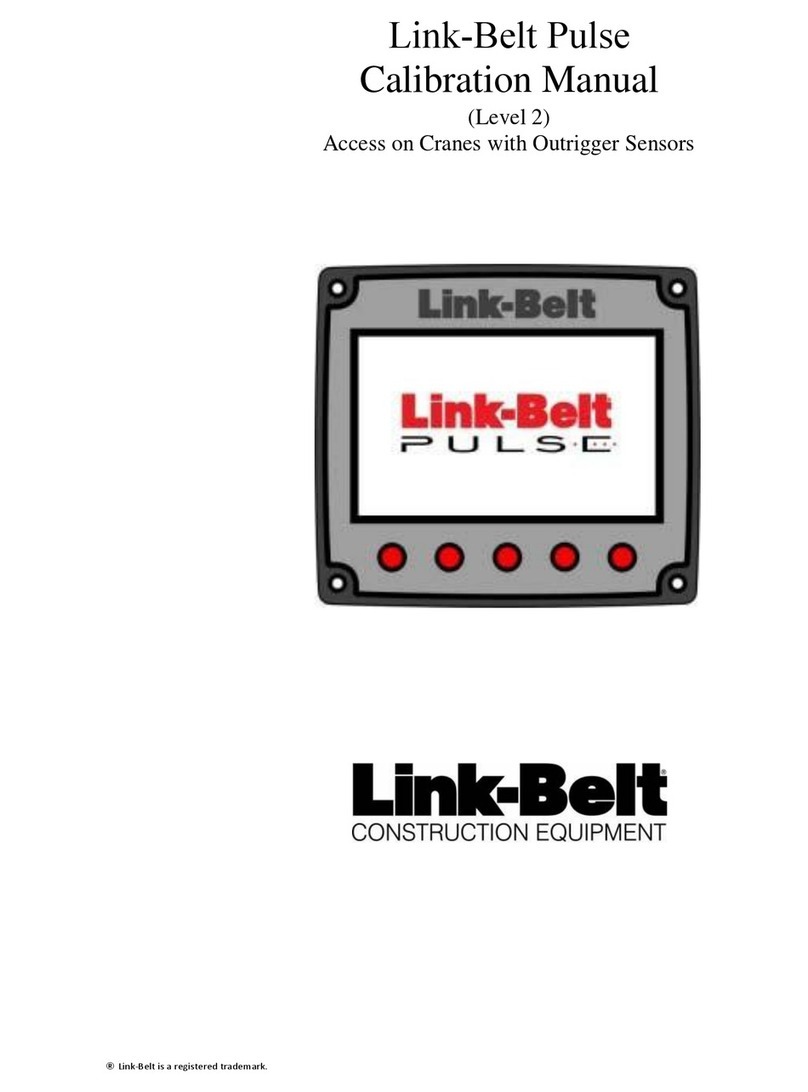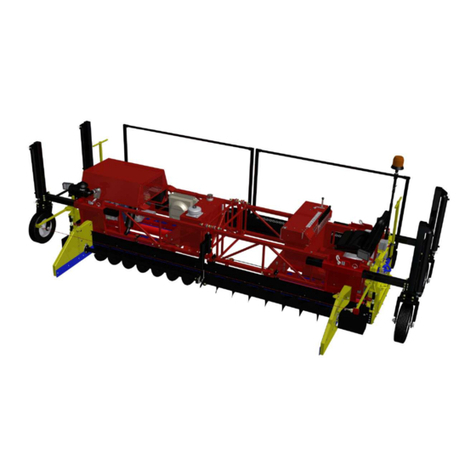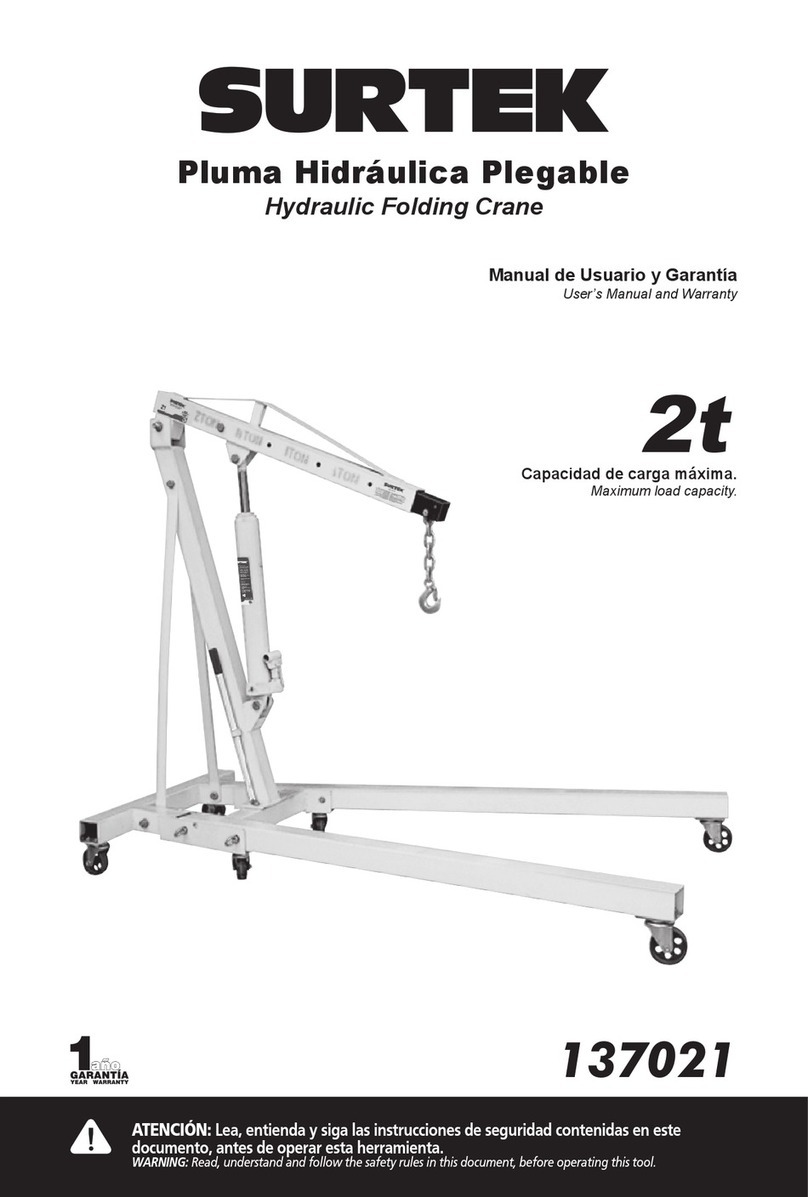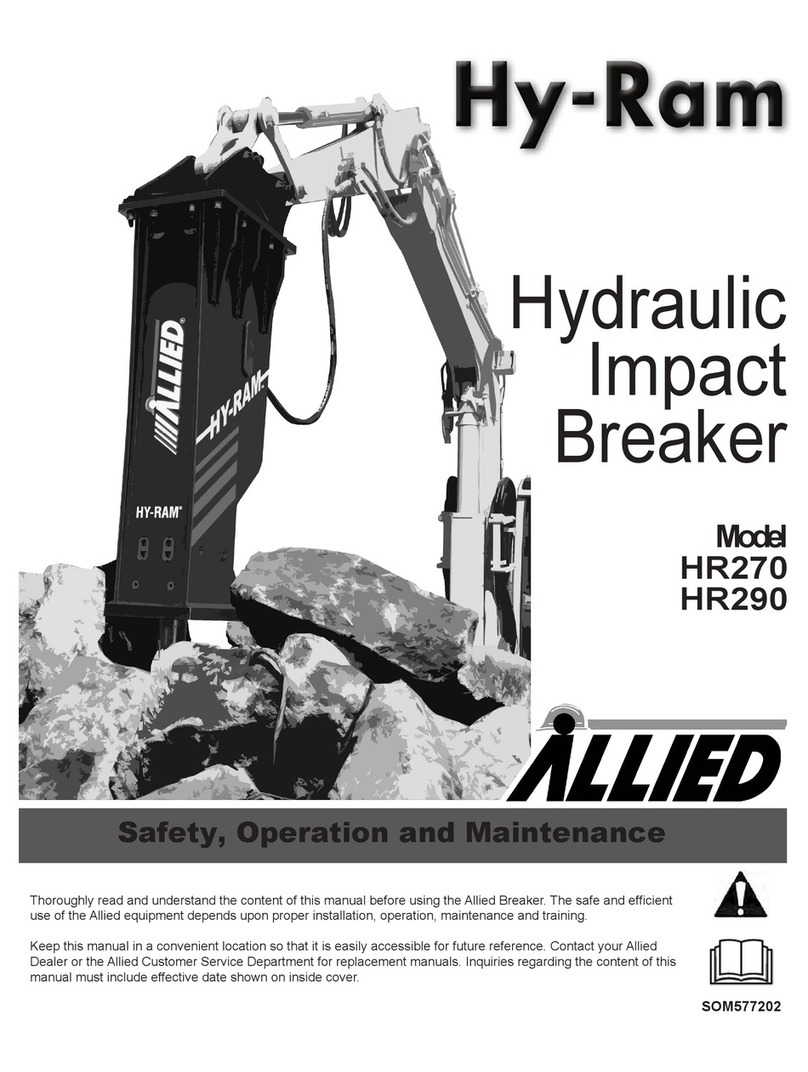Unitech UB 60 User manual

.
TUBE BENDER
UB 60 and UB 76 Tube Bender
INSTRUCTION MANUAL
TUBE BENDER
PAGE: 1

Contents
INSTRUCTION MANUAL
TUBE BENDER
PAGE: 2
Introduction
3
Technical Data
4
Statement of Noise
4
Transport
5
Positioning
5
Dimensions
5
Electrical Connections
5
Residual Risks
6
Operator Safety
7
Bending Procedure
7
Setting the Angle
8
Setting the Bend Speed
11
Making the Bend
12
Maintenance
12
Wiring
13
Disposal
13

Introduction
This Instruction Manual is for your safety. It is also essential to ensure the machine operates to its
maximum efficiency during a long life and returns the highest production profitability.
The BB Type Tube Benders are ‘easy to use’ machines providing quality bending solutions. A
comprehensive tooling range ensures high bend quality on both models according to the capacity
required. All formers can be specified with either counter formers or guide rollers depending on material
and wall thickness..
It is important that the bender is used only for the purpose for which it is manufactured and is not adapted
or modified in any way. Modifications or other uses thereof will invalidate any standard warranties.
The machine is covered by manufacturer’s warranty for a period of 12 months from the date of purchase
against manufacturer defects. The warranty period does not exceed 18 months from the date of delivery
from the manufacturer’s factory.
Warranty covers only defective manufactured parts and/or components that are confirmed as defective by
the manufacturer.
The manufacturer is responsible for the warranty supply only of free-of-charge spares but will not be
responsible for loss of work or consequential damage. Shipping and customs fees for the spare parts must
be paid by the end-user. A Warranty claim does not relieve the Customer from payment obligations.
Non-genuine parts or modifications to the controls or the purpose of use of this machine is dangerous, and
well nullify any claims.
Note: All warranty claims must be made stating the Model, Serial Number and the Manufacture Year of
the machine.
INSTRUCTION MANUAL
TUBE BENDER
PAGE: 3

Technical Data
INSTRUCTION MANUAL
TUBE BENDER
PAGE: 4
Maximum Values
UB60
UB76
Tube Ø and wall thickness
Ø mm and mm
60 x 4
76 x 4
Box section capacity
mm x mm
40 x 40
60 x 60
Maximum solid bar diameter
Ø mm
345
45
Bending radius
mm
450
500
Angle
deg
180
180
Bending speed
rpm
3
3
Motor
Torque
Nm
8800
12000
Power
kW
1.5
4.0
Voltage
v
380/400
380/400
Connection
phase
3+N+E
3+N+E
Weight
kg
400
500
Dimensions
Length
mm
1200
1300
Width
mm
600
700
Height
mm
1200
1300

Transporting
During storage and transporting, this machine should be kept covered and dry from inclement weather
conditions. In particular the electrical control panel must be kept dry. When strapping to road transport,
ensure straps are not damaging cables and vulnerable components.
Use a fork truck to move this machine. Check the balance as the centre of gravity may not be where it
appears. Retain the wooded transport skids on the machine until final positioning.
Dispose of packaging safely and in consideration of local environmental expectations. Report any defects
or damage immediately to ________________, or the supplying distributor. Failure to notify prior to
connection to any power supply will render subsequent claims invalid. Clean anti-rust protection film from
steel surfaces and working parts.
Positioning
Locate the machine where it is safe to use in consideration to other personnel in the vicinity and where
materials can safely arrive and depart. It is advisable to be guided by the Provision sand Use of Work
Equipment (PUWER) Regulations, including satisfactory lighting levels.
Site the bender on a level concrete or solid floor in a clean and dry environment, with a minimum of 1.5
metres personnel access all round.
Electrical Connection
ONLY A COMPETENT ELECTRICIAN SHOULD WIRE THIS MACHINE.
INSTRUCTION MANUAL
TUBE BENDER
PAGE: 5
This machine requires three phases, neutral and
earth. Ensure correct power supply is available,
with a lockable isolator within physical and visual
proximity of the operator. If trailing leads are to be
used, ensure they are suitably protected.
Plug in the foot pedal console.
Check motor rotation and if in reverse to the
motor arrow, change two phases.

Residual Risks
Other general hazards are:
INSTRUCTION MANUAL
TUBE BENDER
PAGE: 6
There remains some residual risk which should be
taken account of before and during the use of this
machine. The operation of the machine results in
materials protruding and moving in an arc beyond
the machine boundary during the bend process.
The residual hazardous events are crushing,
trapping or knocking into persons in the arc
danger zone.
The tooling can be changed for different materials
to be bent. These are manually handled.
The hazardous events are foot injury from
dropped tooling, finger trapping and heavy lifting
injury.
Electric Shock
General Danger
Hand Pinch
Body Pinch
Hazard Earthing Point

Operator Safety
BEFORE ATTEMPTING TO OPERATE THE MACHINE BECOME FAMILIAR WITH THE CONTROLS AND THESE
OPERATING INSTRUCTIONS.
It is a requirement of the Provision and Use of Work Equipment Regulations (PUWER)
that suitable training
is conducted for control familiarisation. This must include associated health and safety awareness, and
good housekeeping practice.
ONLY SUITABLY COMPETENT PERSONS SHOULD OPERATE THIS tube bender.
Consider and use the necessary personal protective equipment, which should as a minimum include
protective footwear, eye protection, and heavy duty gloves when handling material and replacing mandrel
tools. Do not allow clothing, apparel or hair near moving parts.
Never operate the machine unless all guards and cover supplied are placed and closed. Do not load the
machine or adjust the mandrel whilst the machine is bending.
Always disconnect the power at source when performing maintenance work or making adjustments other
than those necessary for the normal operation of the machine.
Accumulation of scale from tubes, and grease can create potentially dangerous situations. Regularly clean
between operations, ensuring also tools or other objects on the bed or surfaces are correctly stowed
away. Keeping the machine clean and tidy will increase efficiency and productivity, avoid injury, and
reduce the possibility of a breakdown.
If any unusual noise or machine behaviour becomes apparent, switch off, isolate, and seek assistance.
Bending Procedure
INSTRUCTION MANUAL
TUBE BENDER
PAGE: 7
●Add tooling and secure to the bed.
●Secure the material between the
former and the counter-former

Set the Angles
INSTRUCTION MANUAL
TUBE BENDER
PAGE: 8
Actual angle of the tooling
Back poınt . This function does not apply to this machine
Required setting angle.
This button does not require activating
Setting the required angle.
●Press PROG to find Set-2
●Use up/down buttons to select the required angle. Value
will display in the Set-2 window.
●Press PROG to secure value.
●To bend, press and gold the right pedal. The former will
stop at the required angle.
●Release the pedal and the former will stay. Press and
release the left pedal and the former will return to its
back point.

Calibration
Parameter Settings
INSTRUCTION MANUAL
TUBE BENDER
PAGE: 9
To check and/or reset for zero at machine start-up:
●Press the RESET button once and thıs screen will show a
value.
●Press and hold the left foot pedal to ensure the former is
at zero location.
●Use the up/down buttons to read 1 in Set-2 window.
●Press PROG to secure.
●The values in both windows will read 0.
●Your calibration is complete.
●Press and scroll PROG to display S.:F2
●Use up/down buttons to read 1 at Set-2
●window.
●Press PROG to secure. 1 will transfer to Set-1 window
●This accesses the Parapmer menu.
●Pressing PROG key will now move through parameter
settings

Parameter settings contd.
INSTRUCTION MANUAL
TUBE BENDER
PAGE: 10
●Press and scroll PROG to display bol (Divider)
●The reading must be 556
●Use up/down buttons if reading 4 at Set-2 window
●Press PROG to secure. 556 will show in both windows
●Press and scroll PROG to display CarP (Multiplier)
●The reading must be 985
●Use up/down buttons if reading 4 at Set-2 window
●Press PROG to secure. 985 will show in both windows
●Press and scroll PROG to display dur ( Forward hysteresis)
●
●This is used to set the overbending for spring back. Based on trial
and experience according to the material being bent:
●
●Use up/down buttons to provide overbent angle Press PROG to
secure

Set the Bend Speed
INSTRUCTION MANUAL
TUBE BENDER
PAGE: 11
●Press and scroll PROG to display dur9 ( Backward hysteresis)
●This feature is not used on bending machines
●Use up/down buttons to read 1 if different
●Press PROG to secure
The higher the value, the slower the forward bens
speed.
Note that the cycle returns at a constant set
speed.

Making the Bend
Maintenance
Maintenance works should only be carried out by sufficiently qualified or competent personnel. Wear
suitable ppe (personal protective equipment). Use correct tools that are in good condition. Clean regularly.
UNDERSTAND THE MANUAL AND MACHINE BEFORE CARRYING OUT MAINTENANCE.
If components have been removed for maintenance, ensure these are correctly reinstated before allowing
an operator to start the machine. Remove any residual oil and debris from the working zone left from
previous operations. Never allow operators to use the machine after maintenance without checking.
INSTRUCTION MANUAL
TUBE BENDER
PAGE: 12
Press and hold the right pedal for bending. At the
required angle the former will stop.
Press and hold the left foot pedal to return the
folder.
Releasing the foot pedal at any time will stop the
former. Repressing the foot pedal part way
through a bend process will resume the process.
If the foot pedal has been released because of an
emergency, press the Stop and check that dangers
have been eliminated before pressing the foot
pedal to resume

Wiring
Wiring diagrams are available on application. Checking, repairing or amending control wiring is a specialist
task.
Disposal
Current environmental legislation requires owners of machines to consider the environment when
disposing of machinery. This also applies to waste material resulting from the normal operation. All cut
waste material, components, replacement parts, cleaning detritus, and final machine disposal should be
conducted in accordance with accepted environmental policies and established waste and recycling chains
in place. Particular attention should be made to oil disposal after maintenance or final machine breaking.
INSTRUCTION MANUAL
TUBE BENDER
PAGE: 13
Maintenance Schedule
Low use frequency
At each use
Six monthly
High usage frequency
Daily
Weekly
Monthly
Annually
Never add oil or grease to mandrels and formers. This will cause the material to slip and the bend to be
inaccurate.
Clean away any metal scale, grease and tools left by
previous operations
✔
Check cable to the machine and foot pedal
console are free from damage
✔
Operate the machine, press the Estop to check
✔
Lightly oil the tooling shaft and spindles
✔
Check wearable parts, pins, hinges bolts
✔
Check all electrical connections
✔
Check holding down bolts.
✔
This manual suits for next models
1
Table of contents
Popular Construction Equipment manuals by other brands
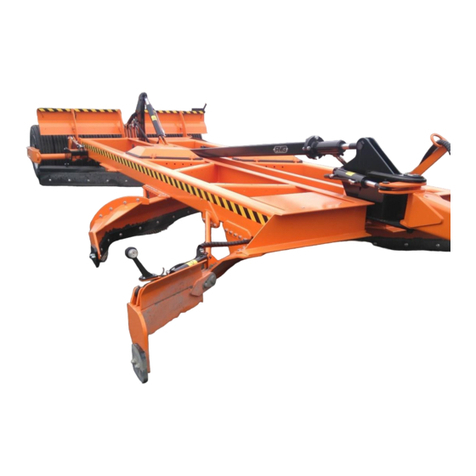
FMG
FMG TLN370 Operator's manual
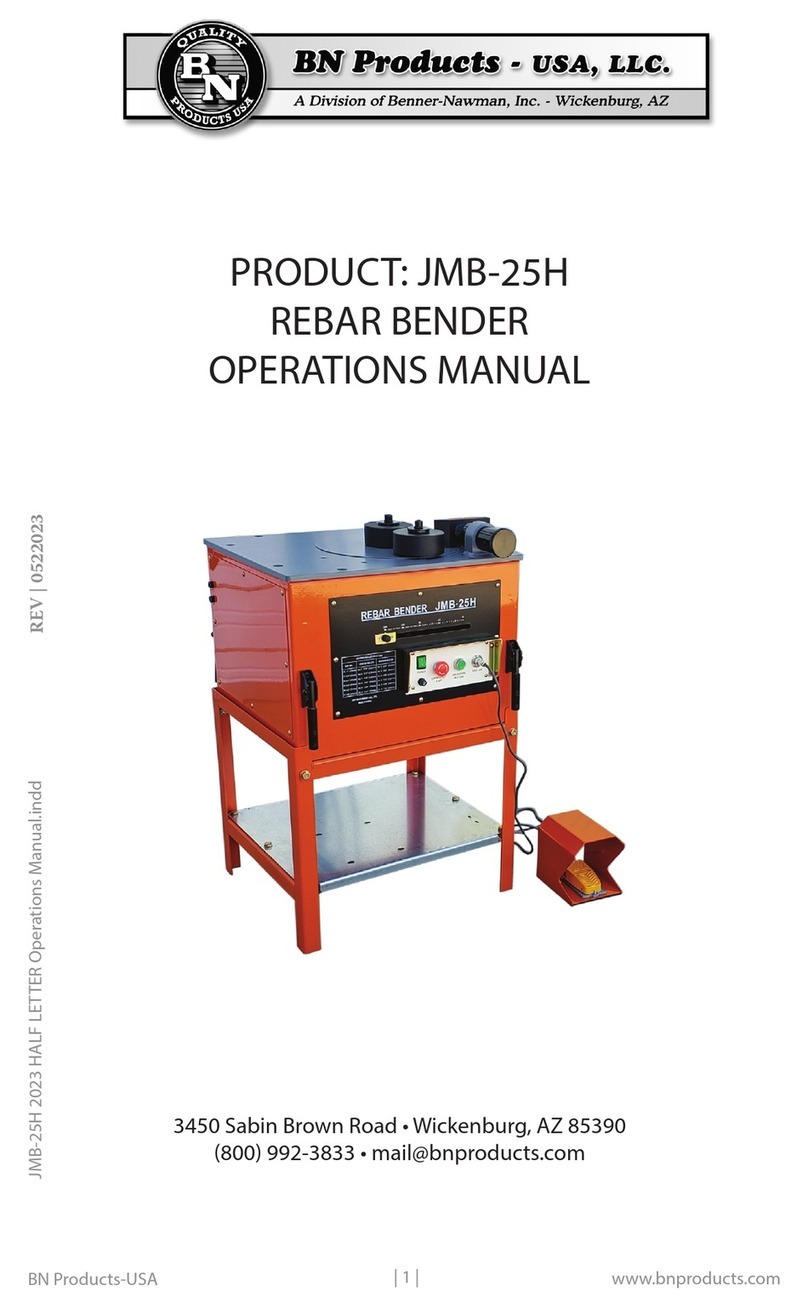
Benner-Nawman
Benner-Nawman BN Products JMB-25H Operation manual
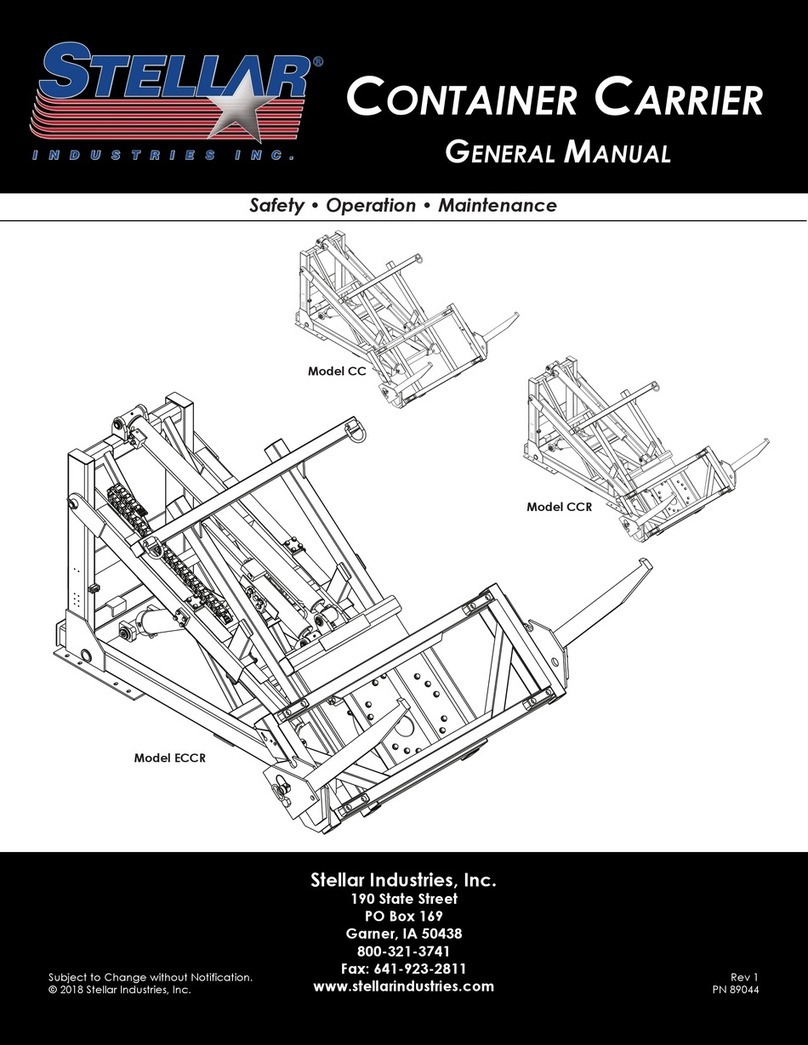
stellar labs
stellar labs EC Series General manual
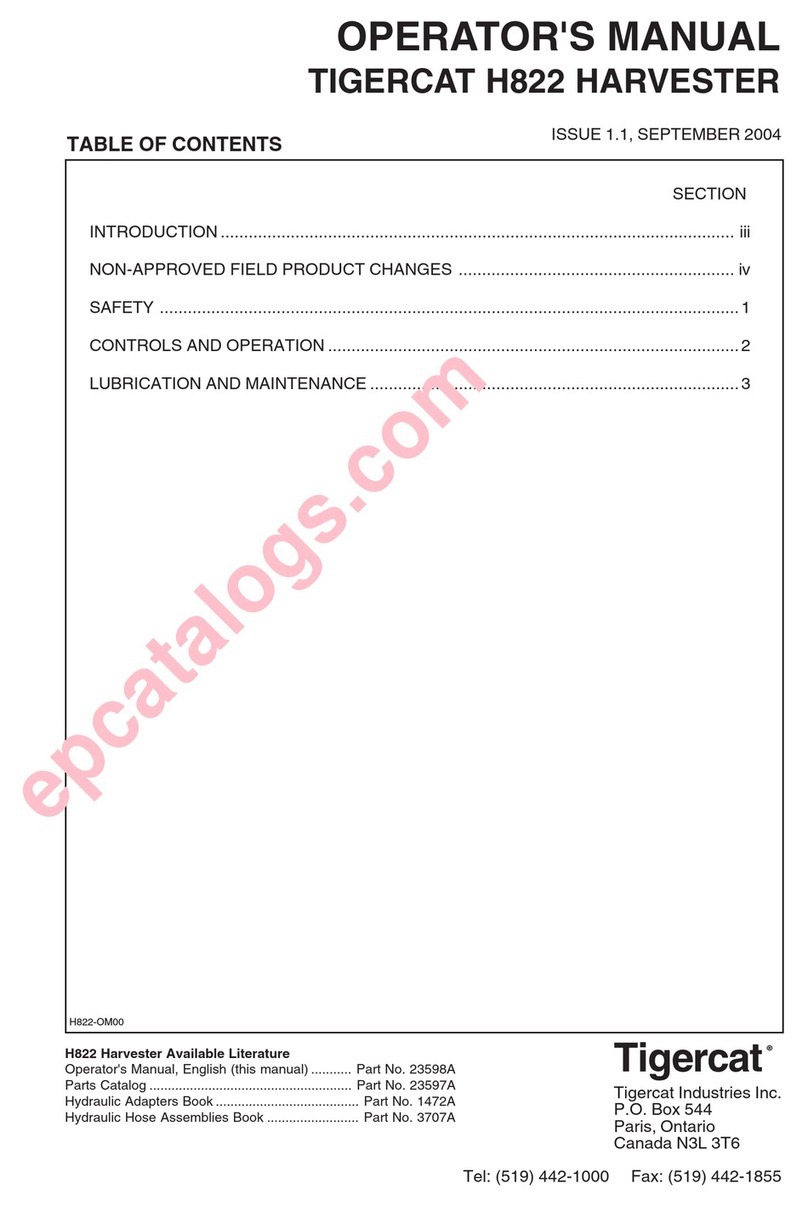
Tigercat
Tigercat H822 HARVESTER Operator's manual
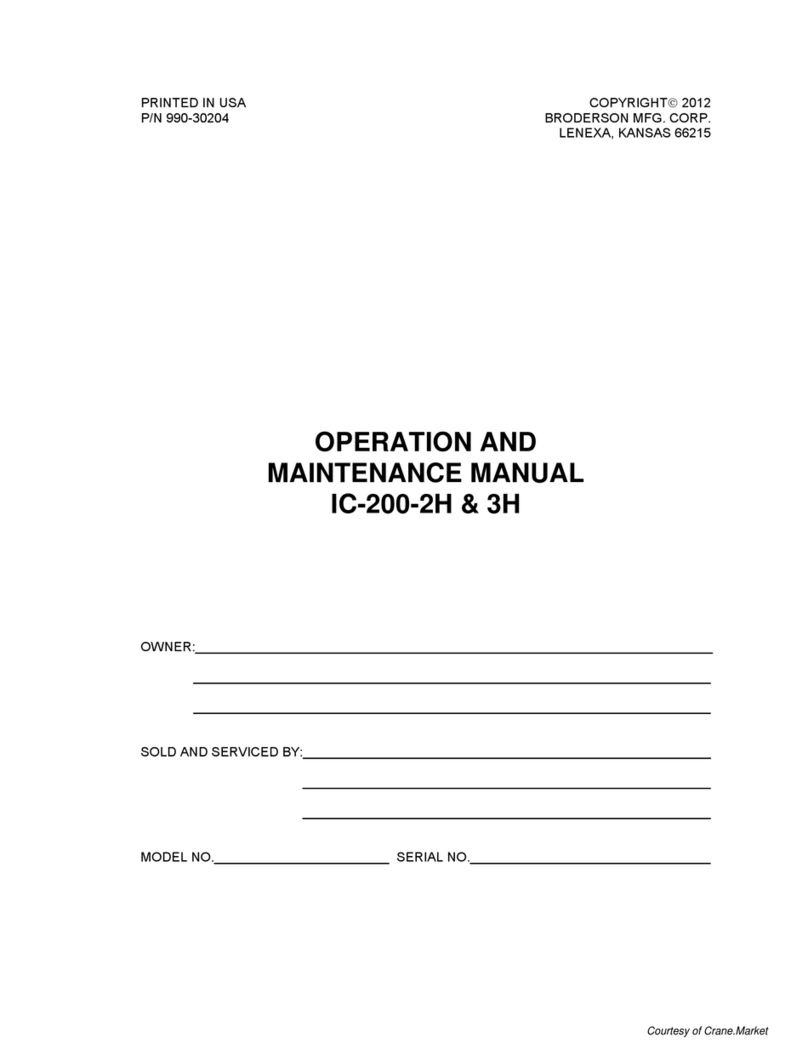
Broderson
Broderson IC-200-2H Operation and maintenance manual
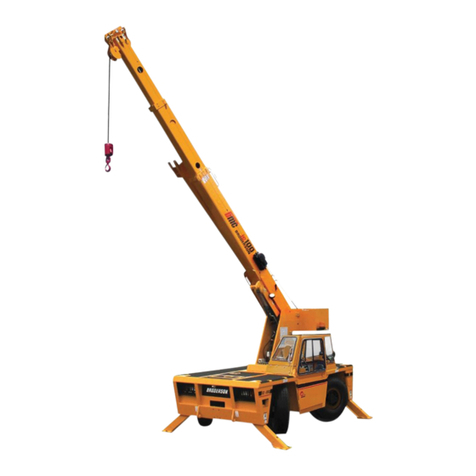
Broderson
Broderson IC-100-B Operation and maintenance manual
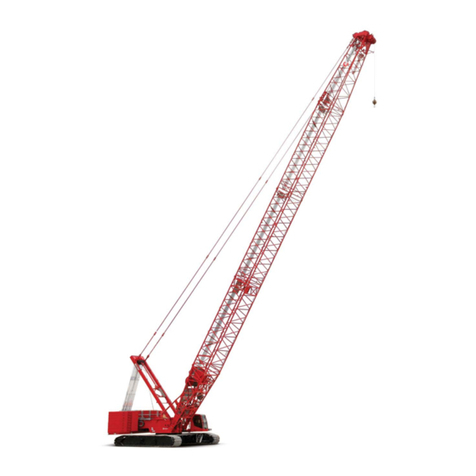
Manitowoc
Manitowoc MLC300 Operator's manual
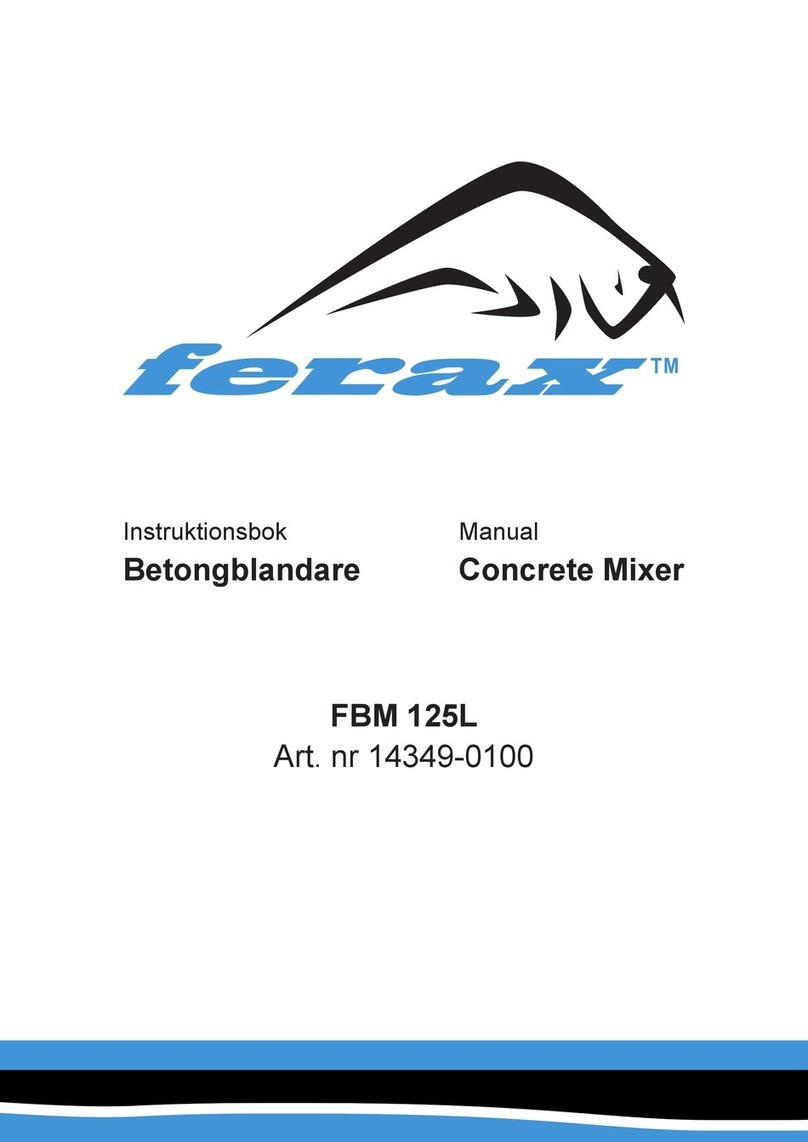
Ferax
Ferax FBM 125L manual
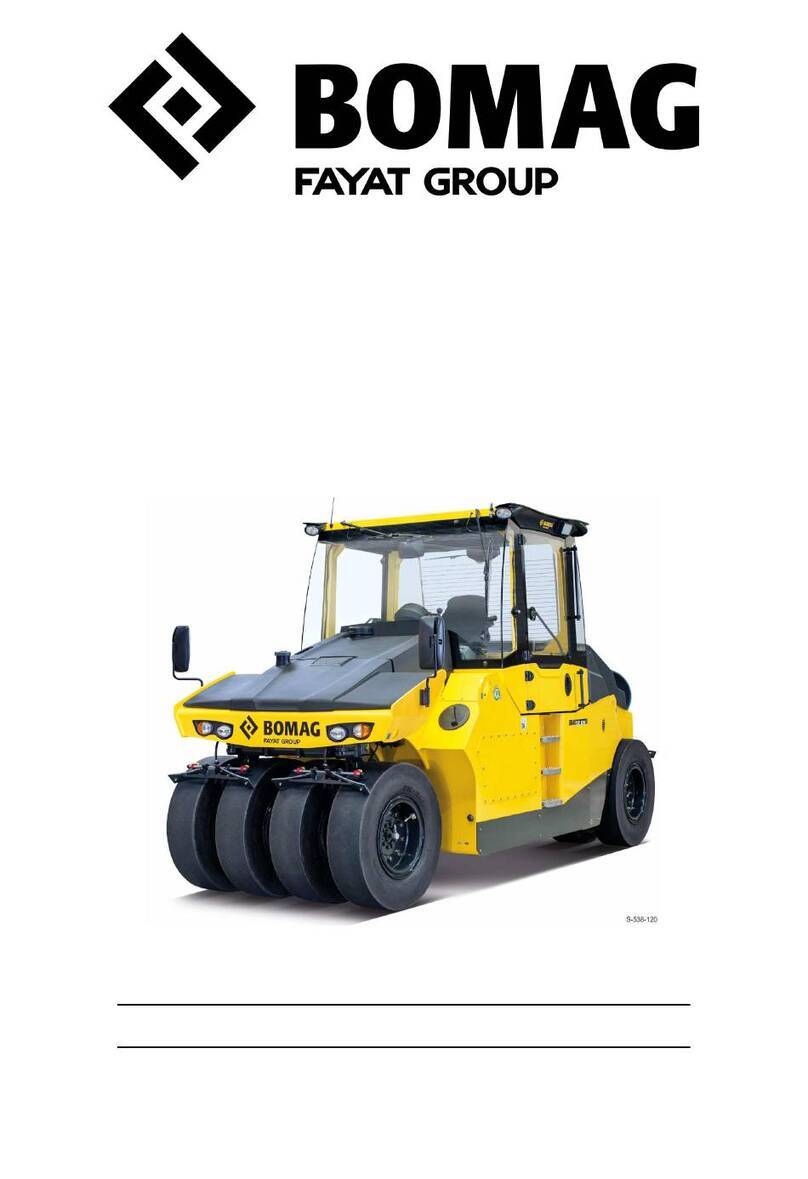
Fayat Group
Fayat Group BOMAG BW 28 RH Service manual
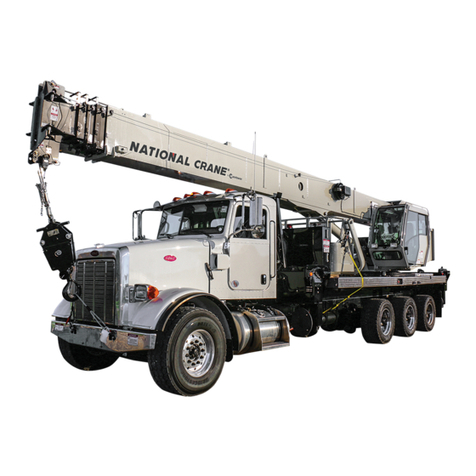
Manitowoc
Manitowoc National Crane NBT40-1 Series Service manual

Curb Roller Manufacturing
Curb Roller Manufacturing BATT Screed 6000 owner's manual
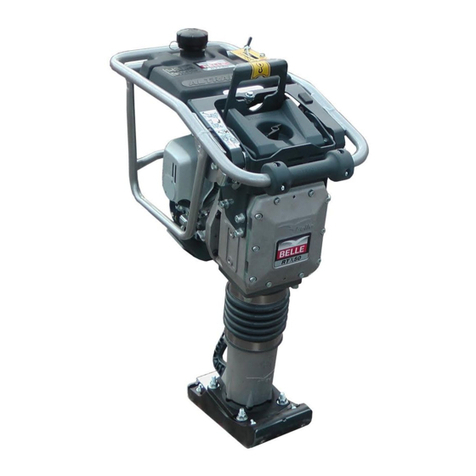
Altrad Belle
Altrad Belle RTX 50 Operator's manual
